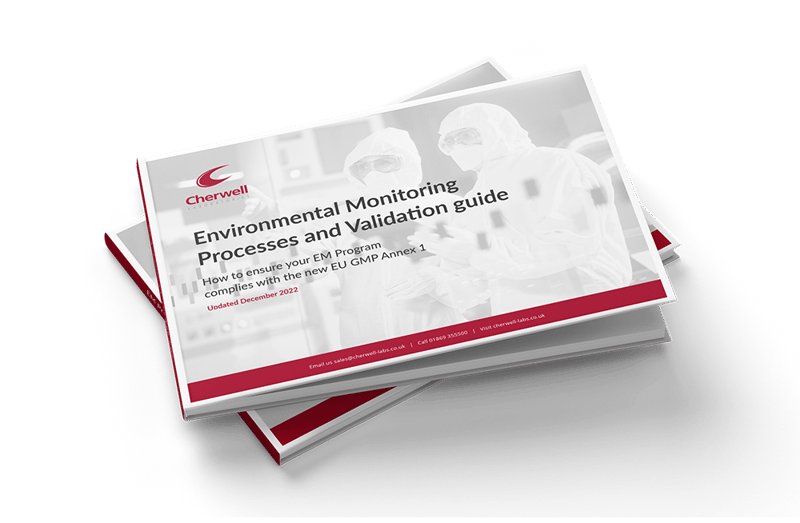Proving the absence of contamination
Sterility testing is a series of assessments performed throughout the sterile manufacturing process. These tests are designed to prove the absence of microbial contamination, ensuring that the products are sterile when they reach the consumer. Sterility testing and method validation made the news recently, following criminal court cases against the USA’s New England Compounding Center (NECC).
Method suitability testing checks that microbial growth is visible under non-sterile conditions. This is required to assess that appropriate sterility testing is performed, and is crucial for any product containing preservatives.
Antimicrobial activity is part of the suitability testing, confirming neutralisation of antimicrobial agents in a product. Without such confirmation, it’s impossible to be certain that a sterility test shows the manufacturing process is sterile: contamination could be masked by the active antimicrobial agents in the product.
The goal is to determine whether fungi or bacteria will grow in the product once all antimicrobial agents are neutralised. Correct choices of neutralising agents – as part of rinses or those integrated into media – are crucial. Any method validation testing relies on consistently reliable products to minimise uncertainty.
The media must be sterile before inoculation, and the appropriate components used to neutralise the antimicrobial compounds. This demonstrates that the sterility test has the best chance of detecting contamination, and eliminating factors that could produce a false negative result.
US case brings sterility testing and method validation into spotlight
The NECC released methylprednisolone – a drug used for epidural steroid injections to relieve back pain – contaminated with fungal meningitis. Use of the contaminated product resulted in over 50 deaths, and caused almost 800 cases of serious illness. Although emails shown as evidence during the NECC trial revealed that the company’s head was aware of the requirement for sterility testing, the company neither performed regular sterility tests, nor used preservatives to inhibit bacterial and fungal growth. The resultant court case led to the company being closed, and its owners receiving jail sentences. As compounding pharmacies produce medications from scratch to fill individual prescriptions, they are not required to test for sterility. Furthermore, such producers are regulated under US State Governance, while licensed manufacturers must follow FDA regulations.
Bacteriostasis and fungistasis testing required by all major pharmacopoeias
The US, European, and Japanese pharmacopoeias all require sterility testing, including method suitability testing. As the NECC case shows, such testing is crucial in pharmaceutical manufacture. Along with sterility testing, method validation is required for every new product and change in experimental conditions of the test. If there are no changes, once validated, Quality Risk Management must identify when to re-assess the method validation.
The pharmacopoeias set out very clear guidelines regarding how method validation is to be performed. There are two major types of test: membrane filtration and direct inoculation. Membrane filtration uses membrane filters with pores not exceeding 0.45μm. They are designed to retain microbes during repeated rinsing steps implemented to remove any preservatives. The filters are placed on suitable media and incubated using recommended growth conditions, ensuring both aerobic and anaerobic microorganisms are captured.
Direct inoculation places the product directly in the suitable media for aerobic or anaerobic growth. It uses dilution or neutralisation to mitigate the effects of any antimicrobial compounds in the product. The manufacturer must decide which method is appropriate. The process takes 14 days, needs to produce a negative result, and must be performed before a product is released. The requirement to test at least 2% of output can pose a challenge for small-scale producers.
Any standard testing procedure must include positive and negative controls. Without confirming a testing procedure’s ability to detect contamination, sterility can’t be guaranteed. A positive sterility test result can also be caused by contamination of the test itself. Failure to properly validate testing procedures could result in valuable resources being wasted trying to find a source of contamination that doesn’t exist. Investment in such controls is more than recouped when inconsistencies are detected.
Failure to test effectively has serious ramifications
The New England Compounding Center case is a sobering reminder of the importance of performing sterility testing and method validation testing.
By ignoring validation procedures, along with other shortfalls, the NECC was responsible for many avoidable deaths and cases of serious illness. Although an extreme example of poor practice and neglect, the case demonstrates the potential consequences of operating without implementing effective testing procedures.
For a more in-depth look at sterility testing and how you can best avoid the risk of any test failures, download our free eBook.







